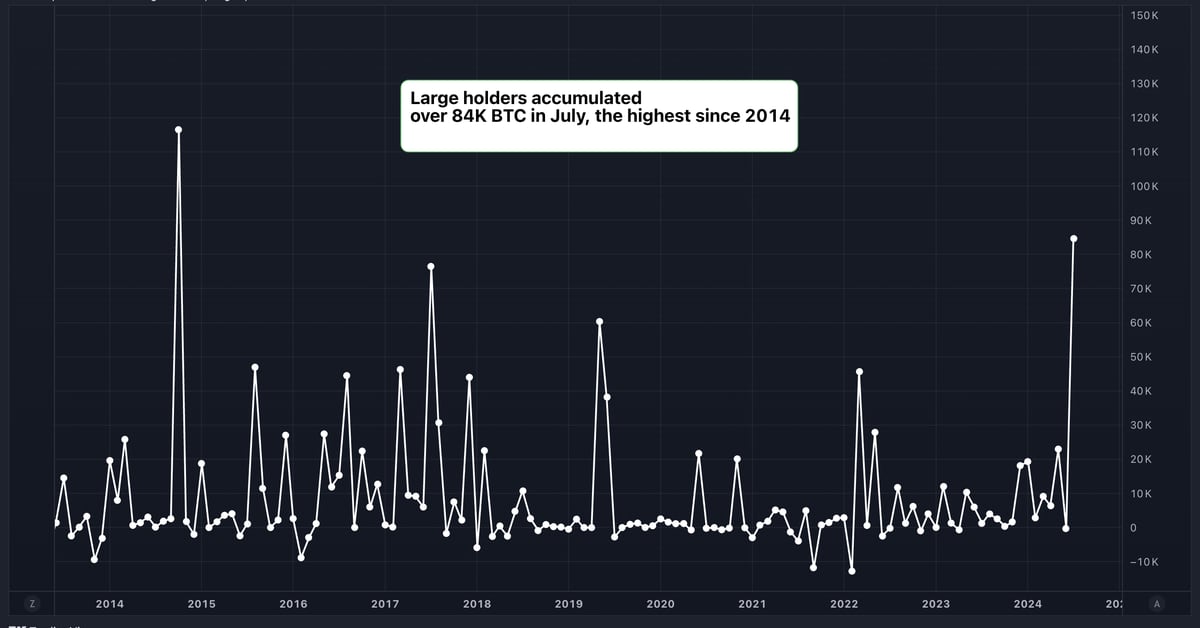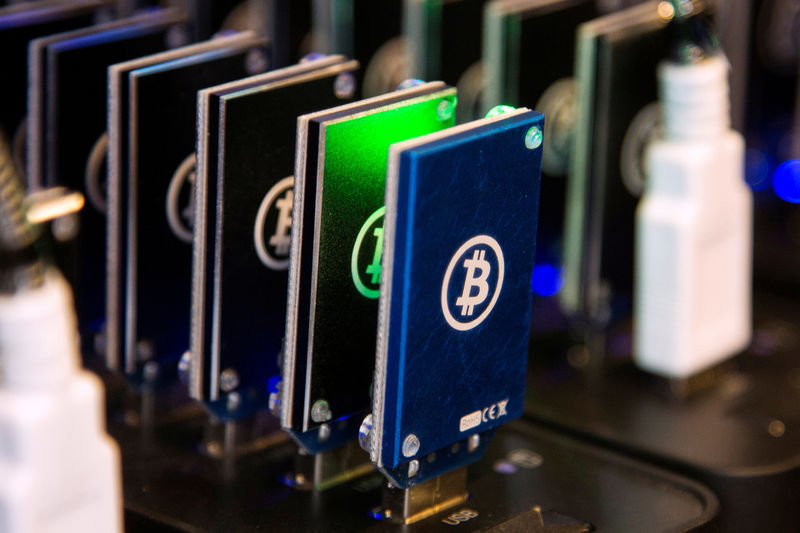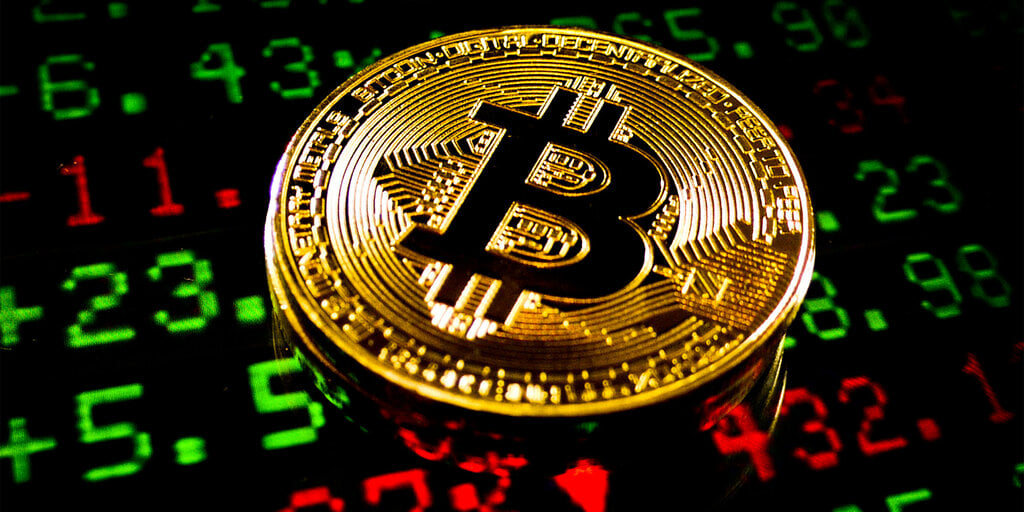Bitcoin
Using Power Laws to Predict When Bitcoin Price Will Reach $1 Million

The following is a guest post by Rajagopal Menon, Vice President at WazirX.
Come the bull market, come the models to predict the price of Bitcoin. In the last bull market of 2021, the Stock-to-Flow (S2F) model was the rage of the season. This model, created by Plan B, assessed the scarcity of assets by comparing stock with annual production. Applied to Bitcoin, the S2F model emphasized its “digital gold” potential and provided scarcity-based long-term price predictions. However, the S2F model disappeared in the crypto winter of 2022.
But fear not, in the current bull run, there is a new model in town – the Power Law Model, which claims to predict the price of Bitcoin with remarkable accuracy.
Understanding Power Laws
In a world seemingly full of chaos and randomness, scientists have discovered hidden patterns and relationships known as laws of power. These laws provide a framework for understanding how different phenomena interact, revealing consistent mathematical patterns that govern various aspects of our universe.
Laws of Power in Everyday Life
Power laws are fascinating mathematical relationships that appear in various phenomena, offering insights into the underlying simplicity of complex systems. They describe how two quantities relate to each other, with a change in one quantity leading to a proportional change in the other. This relationship spans different scales, from the microcosmic to the cosmic, influencing biology, society, technology and natural phenomena.
Animal size limits
Galileo’s square cube law is a classic example of a power law in nature, explaining how an animal’s size affects its strength. As animals grow, their bulk and weight increase much faster than their strength. This law establishes natural limits, explaining why larger animals have thicker bones and why larger animals are found in aquatic environments where buoyancy compensates for weight.
Metabolic rates
Max Kleber’s research on metabolic rates further demonstrates the applicability of power laws. It reveals that an organism’s metabolic rate increases to ¾ the power of its mass, indicating that larger animals are more energy efficient. This principle has a significant impact on understanding the life cycles, growth rates and sustainability of species.
Natural Phenomena and Human Activities
Power laws govern diverse phenomena, from the distribution of earthquake magnitudes to the frequency of words in a language. They explain why we observe a small number of significant events alongside numerous smaller cases. For example, Zipf’s law describes the frequency of words in languages, highlighting the disproportionate occurrence of common words compared to less frequent ones.
Beyond natural phenomena
Power laws extend to human activities such as economics, finance and technology. They elucidate the distribution of wealth, where some individuals own a significant portion of the wealth. In technology, power laws describe how content interacts on the Internet, with some highly popular and many less popular nodes forming a long-tail distribution.
Bitcoin Power Law
Astrophysicist Giovanni Santasi discovered this connection. He says 15 years of data shows that Bitcoin also follows a power law principle. Santostasi first shared the power law model on the r/Bitcoin subreddit in 2018. However, it witnessed a resurgence in January after financial YouTuber Andrei Jeikh mentioned it to his 2.3 million subscribers in a video.
Giovanni’s theory says that the price of Bitcoin is not as random as it seems. There is randomness in this, but in the long run, the price of Bitcoin follows a specific mathematical model. It’s not just a mathematical formula that some guy drew a line at; instead, it follows a power law like those observed throughout the universe.
The yellow line represents the current price and the red line represents the support line, Bitcoin’s level usually never drops below. The green line is the linear regression line, which is like the fair value price where Bitcoin will eventually return, and the purple line is the resistance line where Bitcoin typically tops out.
Predicting the future of Bitcoin
Santostasi’s Power Law Model charts Bitcoin’s price trajectory with remarkable accuracy. It features a chart showing the current price of Bitcoin, a support line indicating the level that Bitcoin typically does not fall below, a linear regression line representing a fair value price, and a resistance line marking the level that Bitcoin typically does not fall below. reaches before a recession.
This model highlights Bitcoin’s remarkably linear growth, particularly evident when outliers are removed. Despite occasional fluctuations, Bitcoin’s overall trajectory follows a discernible pattern reminiscent of other phenomena governed by power laws.
Implications for investors
The Power Law Model offers intriguing insights into Bitcoin’s potential future spikes. Santostasi’s analysis suggests that Bitcoin could peak at $210,000 in January 2026, followed by a subsequent decline to around $60,000. He goes on to predict that Bitcoin will be worth $1 million by July 2033. While mathematical models provide valuable information, they are not immune to errors and may not take into account unforeseen events that could significantly impact prices.
“All models are broken, but some are useful” means that although models may not be perfect, they can still provide valuable information. Models such as the power law model or the stock-to-flow model for predicting the price of Bitcoin have their flaws and limitations. For example, Crypto Quant’s Julio Marino pointed out problems with the power law model, such as underestimating errors and giving a misleading impression of accuracy.
Interestingly, both the power law and stock-to-flow models have faced similar criticism. Despite their flaws, they have historically made almost the same predictions for the price of Bitcoin. However, over time, they may differ in their predictions.
The question arises: if these models are correct, why bother with traditional investment strategies like the 60/40 portfolio? Some argue that new models that explain Bitcoin’s behavior could offer better returns.
While some may think these models are useless, others, like the speaker, believe they still have value. Scarcity, driven by Bitcoin’s fixed supply, plays a role in its price appreciation. Furthermore, factors such as M2 growth also influence the price of Bitcoin.
Although models can provide useful information, they cannot predict the future. Even if the models are flawed, Bitcoin’s trajectory appears upward. Therefore, although it is essential to consider these models, it is also essential to recognize their limitations.
Bitcoin
‘This is huge’ — Billionaire Mark Cuban issues ‘incredible’ Bitcoin and crypto prediction amid price slump

Bitcoin has surged again this year under former President Donald Trump Cryptocurrency boosts US presidential election in November with ‘revolutionary’ plan.
The price of bitcoin has surged to more than its all-time high in recent months, surpassing $70,000 per bitcoin and triggering a wave of mega-optimistic predictions about the price of bitcoinalthough it fell again this week to below $65,000 after the Federal Reserve kept interest rates steady.
Now, as Elon Musk suddenly breaks his silence on bitcoin and cryptocurrenciesBillionaire investor Mark Cuban called a California plan to digitize 42 million car titles using blockchain an “incredible step forward” and “huge” for cryptocurrencies.
Sign up for free CryptoCodex now—A daily five-minute newsletter for traders, investors, and crypto curious people that will keep you up to date and ahead of the bitcoin and crypto bull market
Mark Cuban, famous Shark Tank investor and billionaire owner of the NBA team Dallas Mavericks, has… [+] called a cryptocurrency update “amazing” amid bitcoin’s price slump.
Getty Images
The California Department of Motor Vehicles (DMV) has digitized 42 million car titles using blockchain, it was reported by Reuters, through technology company Oxhead Alpha on the Avalanche blockchain and designed to detect fraud and facilitate the securities transfer process.
“This is an incredible development for crypto,” Cuban, best known as an investor on TV’s Shark Tank and owner of the Dallas Mavericks NBA team, posted on X, joking that U.S. Securities and Exchange Commission (SEC) Chairman Gary Gensler could sue the state as part of his hostility toward cryptocurrencies and blockchain technology.
“The reason this is huge for crypto is because people who hold the tokens will have an app with an Avalanche wallet,” Cuban said. “Tens of millions of Californians having and using a crypto wallet in the next five years, or however long it takes, normalizes the use of wallets and crypto.”
John Wu, president of Avalanche developer Ava Labs, told Reuters that California’s DMV is “creating a wallet that you can download on your phone.”
Sign up for CryptoCodex now—A free daily newsletter for the crypto-curious
Bitcoin’s price has rallied this year, triggering a wave of bullish bitcoin price predictions from… [+] people like billionaire Mark Cuban.
Forbes Digital Assets
Last month, Cuban predicted that if the US dollar falls as the global reserve currency, bitcoin could become “a global ‘safe haven’” and a “global currency.” potentially sending the price of bitcoin to a much higher level.
According to Cuban, bitcoin could become what its most ardent supporters “envision” — a means “of protecting our economies… This is already happening in countries facing hyperinflation.”
The price of bitcoin has skyrocketed over the past year, largely due to the world’s largest asset manager, BlackRock, leading a bitcoin attack on Wall Street.
Bitcoin
Large Bitcoin (BTC) Holders Added $5.4 Billion Worth of BTC in July, Data Shows

Please note that our Privacy Policy, terms of use, cookiesIt is do not sell my personal information Has been updated.
CoinDesk is a awarded media outlet that covers the cryptocurrency industry. Its journalists follow a strict set of editorial policies. In November 2023, CoinDesk has been acquired by the Bullish group, owner of Optimistica regulated digital asset exchange. The Bullish Group is majority owned by Block.one; both companies have interests CoinDesk has a portfolio of blockchain and digital asset businesses and significant holdings of digital assets, including bitcoin. CoinDesk operates as an independent subsidiary with an editorial board to protect journalistic independence. CoinDesk employees, including journalists, may receive options in the Bullish group as part of their compensation.
Bitcoin
Peter Schiff criticizes Michael Saylor’s Bitcoin hype by U.Today

U.Today – Renowned economist and cryptocurrency critic Peter Schiff has criticized Michael Saylor’s recent hype about the growing adoption of cryptocurrencies as a strategic treasury asset by corporations.
Michael Saylor, a well-known Bitcoin advocate and president of MicroStrategy, recently shared his enthusiasm on X about the growing adoption of Bitcoin as a strategic treasury asset.
Citing a comment made by Bitcoin investor Bill Miller in a recent interview with CNBC, Saylor tweeted: “We now have more companies coming forward and saying we will put Bitcoin on our balance sheet as a strategic treasury asset.”
However, not everyone shares Saylor’s enthusiasm. Schiff, a vocal Bitcoin critic and gold bull, was quick to respond with his usual skepticism. In a pointed tweet, Schiff argued: “Bitcoin is neither strategic nor appropriate as a treasury asset. Companies should not risk shareholder funds. They should pay dividends and let shareholders risk their own money.”
Bitcoin enthusiasts are not intimidated
However, Schiff’s criticism shouldn’t deter Bitcoin enthusiasts, who often take Schiff’s words with a pinch of salt. To put things in context, Michael Saylor began buying Bitcoin in 2020 as an inflation hedge and alternative to money. Saylor’s company, MicroStrategy, is among the largest public holders of Bitcoin in the world. As of June 20, it held 226,331 BTC, purchased for around $8.33 billion at an average price of $36,798.
Over the weekend, Schiff was surprised when 87% of the more than 11,000 Bitcoin holders who responded to his X survey said they would not sell any of their Bitcoin even if the price dropped more than 99% to $120. They said not only would they not sell, but that they would continue to buy even when prices dropped.
Schiff unexpectedly revealed that “the main selling point for investors to buy Bitcoin is its excellent past performance record.”
At the time of writing, Bitcoin is trading at $66,067, having reached all-time highs of nearly $74,000 in mid-March.
Bitcoin
Bitcoin Falls as ETF Flows Reverse, Mt. Gox Moves Billions

In a week of drastic fluctuations, the price of Bitcoin (BTC) has retreated from its highs and is currently trading at US$66,250, down 0.9% in European trading.
This volatility comes on the heels of a significant surge above $70,000 earlier in the week, fueled by former President Donald Trump’s ambitious cryptocurrency plans announced in a Bitcoin Conference in Nashville.
Trump’s announcement to fire Securities and Exchange Commission Chairman Gary Gensler and establish a strategic Bitcoin reserve if elected president has temporarily sent the cryptocurrency market into a frenzy.
However, the excitement was short-lived as a series of events unfolded which caused investor sentiment to sour.
A significant sell-off of about 8% was triggered when the US Marshals Service moved $2 billion in Bitcoin for new wallets.
This move has reignited fears of a potential large-scale liquidation, compounded by lingering concerns over a possible Bitcoin liquidation from Mt. Gox. Early this morning, Mt. Gox administrator transferred US$2.2 billion value of your BTC assets in a new wallet.
Meanwhile, the US Bitcoin ETF spot market is showing signs of fluctuation, according to data from SoSo Value. On July 30, Bitcoin spot funds experienced their first net outflow in five days, totaling $18.3 million.
The Grayscale Bitcoin Trust (GBTC) saw outflows of $73.6 million, while the BlackRock iShares Bitcoin Trust (IBIT) attracted $74.9 million in inflows. But outflows from other funds left the category in the red at the end of Tuesday’s trading session. The total net asset value of spot Bitcoin ETFs currently stands at a substantial $58.5 billion.
In other crypto news, Ripple (XRP) is up 8.6% in the past 24 hours, hitting over 64 cents – its highest point since March 25, according to CoinGecko. data.
This rally comes amid a scheduled token unlock and growing optimism around a potential deal in the long-running SEC vs. Ripple lawsuit.
The crypto community is closely watching the SEC’s actions, particularly its intention to amend its complaint against Binance regarding “Third-Party Cryptocurrency Securities,” which some interpret as a positive sign for Ripple.
On a market analysis noteSingapore-based cryptocurrency trading desk QCP Capital wrote that while election headlines continue to dominate, several crucial macroeconomic events loom on the horizon.
“Election headlines will continue to be a key focus, but several key macroeconomic events are also on the horizon. Key events starting with the FOMC meeting on Wednesday, megacap tech earnings (Apple, Amazon, Meta) throughout the week, and unemployment data on Friday,” QCP Capital wrote.
Edited by Stacy Elliott.
-

 Regulation11 months ago
Regulation11 months agoRipple CTO and Cardano founder clash over XRP’s regulatory challenges ⋆ ZyCrypto
-

 Regulation10 months ago
Regulation10 months agoNancy Pelosi Considers Supporting Republican Crypto Bill FIT21 – London Business News
-

 Videos11 months ago
Videos11 months agoCryptocurrency News: Bitcoin, ETH ETF, AI Crypto Rally, AKT, TON & MORE!!
-

 Regulation11 months ago
Regulation11 months agoBitcoin’s future is ‘bleak’ and ripe for regulation, says lead developer
-

 News8 months ago
News8 months agoAave Price Increases Following Whales Accumulation and V3.1 Launch
-

 Regulation8 months ago
Regulation8 months agoSouth Korea Imposes New ‘Monitoring’ Fees on Cryptocurrency Exchanges
-

 Regulation8 months ago
Regulation8 months agoA Blank Sheet for Cryptocurrencies: Kamala Harris’ Regulatory Opportunity
-

 Regulation8 months ago
Regulation8 months agoCryptocurrency Regulations in Slovenia 2024
-

 News11 months ago
News11 months agoThe trader earned $46 million with PEPE after reaching a new ATH
-

 Regulation10 months ago
Regulation10 months agoCrypto needs regulation to thrive: Tyler Cowen
-

 Blockchain11 months ago
Blockchain11 months agoSolana ranks the fastest blockchain in the world, surpassing Ethereum, Polygon ⋆ ZyCrypto
-

 Blockchain11 months ago
Blockchain11 months agoSolana Surpasses Ethereum and Polygon as the Fastest Blockchain ⋆ ZyCrypto





